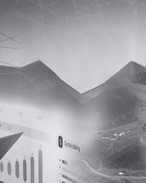A quick gaze into the crystal ball sees Preston Resources crippled by process and re-financing issues; Anaconda readying to take its former chief construction engineer, Fluor Daniel, to court; and Centaur trying to un-bog itself from a frightful glug of debt and high overheads.
But pushing the financial and legal issues to one side for moment, the good news is that the pressure acid leach (PAL) process technology does work. All three plants are producing metal and in the case of Cawse, production has reached design capacity.
The ultimate confirmation of PAL will come when Murrin Murrin, the biggest of the three mines, lifts from its current operating capacity of about 25% to its first benchmark level of 45,000 tonnes of nickel per annum.
Owner Anaconda has earmarked a $128 million expansion to 65,000tpa which is planned for the second half of this year, but don’t be surprised to see that process accelerated and possibly funded through the sale of select Stage 1 infrastructure utilities.
Murrin Murrin’s genesis has been painful to watch. Over time it’s become apparent that the operation was under-designed and its choice of construction materials poor.
Rectification issues have been extensive and at the time of writing there were still a number of secondary process areas needing to be tweaked on top of the very public problem with the flash vessels.
Picking exactly when Anaconda becomes more than a “leap of faith” as an investment is something that continues to baffle many analysts. As too does the vexing issue of production costs – a subject Anaconda has been reticent to talk about.
However, the market is slowly warming to the fact that these ships of the desert could ultimately be viable. Although it might be a while before we see a major revolution in the cost of nickel production, it seems irreversible that the face of nickel mining has changed forever.
This is good news for second tier players such as Comet Resources and Black Range Minerals who have been very much unloved since the initial laterite hoopla died down more than a year ago.
Trying to convince funding entities to part with large licks of cash while the first wave of mines plowed into serious capital cost overruns has not been easy.
Yet Comet and Black Range have soldiered on. Both have completed their feasibility work and both are readying for construction.
Both look to be large, low-cost producers. Both say their processes will be free from the troubles that have hindered Bulong, Caswe and Murrin. Both have appointed consulting brokers and bankers. Both still need further funding. You see the point.
Neither company likes talking too much about the issue of who will go first – the stock answer is that it’s all for the good of Australia.
But at the Diggers and Dealers Forum in Kalgoorlie, both sides, over a few lemonades, were quietly keen to acknowledge where they saw their competition.
The key issues apart from capital cost are size and development timing.
Black Range is chasing $626 million to develop a 2Mtpa PAL operation at Syerston in New South Wales which will produce 20,000t of nickel and 5000t of cobalt per annum.
The company said at the end of June 30 that it was predicting average cash costs for the first 20 years of operation of US29c per pound of nickel after cobalt credits. On the basis of 65% debt funding, the pre-tax NPV for the project at a 10% discount rate would be $522 million.
Black Range is scheduled to have its engineering and procurement contractors in place by October to start work on sourcing long-lead items. This is required so that project work can start on site by the end of the first half of 2001, ready for commissioning by mid-2003.
The Syerston Environmental Impact Statement is being finalised and is due for submission in October. All things being equal, Black Range hopes to have its necessary licences by the first quarter of 2001.
Black Range has also been evaluating the platinum potential of its ore. Test work on bulk samples using wet high intensity magnetic separators on mill discharge and Knelson gravity concentrators on classifier underflow confirm a combined 60% platinum recovery to concentrates representing 2-3% of mill feed weight.
Black Range envisages using a small atmospheric acid leach system to clean the concentrates with the leach solutions being returned to the high PAL circuit. The detailed design will incorporate gravity and magnetic recovery equipment as part of the autoclave slurry feed circuit.
Comet has overcome its immediate funding issues by selling a 40% stake in Ravensthorpe to Billiton Plc subsidiary QNI for $36 million. QNI also has an 11.5% stake in Comet which it purchased for $8 million last November.
Comet’s projections are that the Western Australian mine will be developed at the capital cost of $720 million (another $200 million will be spent by Billiton at its Yabulu refinery in Queensland which will take a nickel-cobalt hydroxide product on a take-or-pay basis).
Ravensthorpe will produce about 145,000tpa of concentrate, which equates to 35,000t of contained nickel and 1300t of cobalt.
At the end of May the joint venture partners agreed to spend $21 million on the Front End Engineering and Design (FEED) program which is scheduled to take Ravensthorpe to 25-30% of detailed design and aid the procurement of project finance.
Engineering construction contractor Multiplex has appointed Canadian group SNC-Lavalin, in joint venture with Worley Engineers, as the process designers for the FEED program.
Comet and Billiton expect construction to begin in April next year and the first nickel-cobalt hydroxide to be produced two years later. It could be another two years after that before the plant hits full design capacity.
Comet does have an out if it fails to raise new equity finance. If it can’t raise the equity on acceptable terms, Billiton may buy Comet’s remaining holding of 46% on the proviso that it reimburses project expenses incurred by Comet after the multinational bought into the project.
This Plan B may well cash Comet up but doesn’t seem ideal if Comet’s economic model holds true. Using a nickel price of US$3.25/lb, Raventhorpe will be throwing off about US$85 million per annum in profits (before tax) during its first 10 years of life.
























